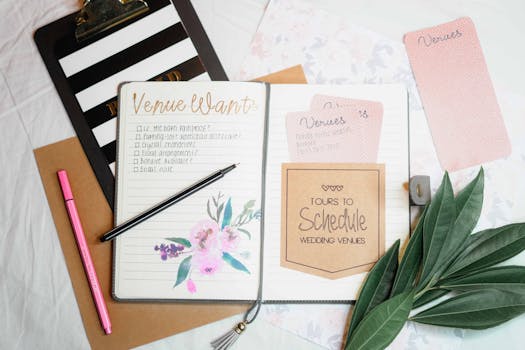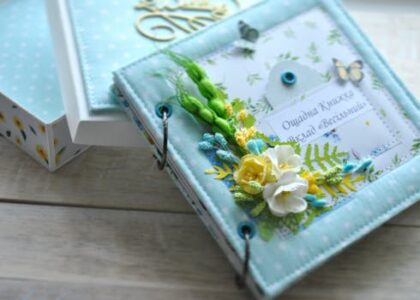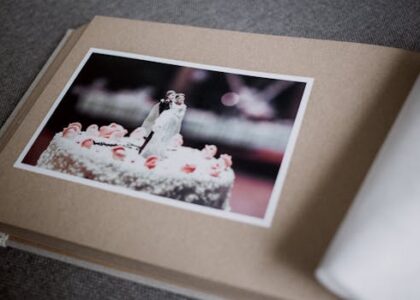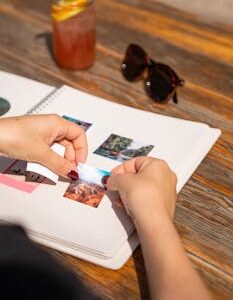As an Amazon Services LLC Associates Program participant, we earn advertising fees by linking to Amazon, at no extra cost to you.
Customizing Layouts for Different Wedding Events
Creating a customized layout for each wedding event is essential to reflect the unique atmosphere and intention of the occasion. For the engagement party, focus on an intimate layout that encourages conversation. Consider round tables where guests can easily interact and mingle. Adding personalized decor elements like photos of the couple or themed centerpieces elevates the ambiance.
For the ceremony, the layout should highlight key moments while prioritizing guest comfort. A traditional setup often includes rows of chairs facing the altar, but don’t shy away from creative configurations like a circular arrangement. This can create a more inclusive feel, ensuring all guests share the same intimate moment.
The reception layout is where you can truly express personality. Mix high and low seating arrangements to create a playful vibe. Long banquet tables encourage family-style dining and foster a sense of togetherness. Pair this with versatile decor that resonates with your theme, whether it leans towards rustic charm or modern elegance.
For the bridal shower, the layout can be lighthearted and whimsical. Utilize lounge areas with cozy seating and playful centerpieces to set the mood for games and laughter. Tailor the space for activities, like a station for crafting personalized favors, which can engage guests and create lasting memories.
Ultimately, customizing layouts enhances each event’s purpose and ensures an unforgettable experience for everyone involved. Every layout decision should reflect the couple’s style and make guests feel like a part of their love story.
Print vs. Digital Album Layouts: Pros and Cons
Print albums exude a tactile quality that digital options struggle to replicate. There’s something special about flipping through physical pages, feeling the texture of the paper, and experiencing the vivid colors in a tangible form. Print albums offer a lasting, heirloom-quality option for preserving wedding memories, and often, they can be customized in various sizes and styles that add a personal touch to the experience.
However, print albums come with their own set of challenges. The cost can be significant, especially when seeking high-quality prints and materials. Budget constraints can limit the number of prints or the size of the album. Once made, altering the content requires new printing, which can be both time-consuming and expensive.
On the flip side, digital albums provide a modern convenience that prints cannot match. They are often more affordable, easily shareable, and allow for a multitude of edits until the final design is perfect. The ability to store images digitally means that you can keep a backup of your memories without the risk of damage or physical deterioration.
However, viewing a digital album on a screen doesn’t quite compare to the experience of holding a physical book filled with memories. Digital formats can feel less intimate, and they risk being overlooked in the hustle of everyday life. It’s all too easy for a digital album to languish in a folder or go unseen, while a beautiful print album can take center stage in your home.
Ultimately, the choice between print and digital layouts should reflect personal preferences and values. Each has distinct advantages and drawbacks, and weighing these can help in creating a cherished keepsake that honors your wedding day.
The Importance of Storytelling in Wedding Albums
Wedding albums are not just collections of photos; they are powerful storytelling devices. Each image should capture a moment that contributes to the overall narrative of your special day. By weaving together the emotions, sights, and sounds of the event, these albums transport viewers back to the heart of the celebration. The candid shots of laughter, the emotional exchanges during vows, and even the details of decor set the stage for a beautifully detailed tale that unfolds as one flips through the pages.
In my view, the very essence of a wedding album is the ability to encapsulate the unique love story of the couple. Every couple’s journey is distinct, and their wedding album should reflect that individuality. Including personal anecdotes, quotes, and even notes that explain certain moments can make the album resonate more deeply.
Additionally, storytelling through photography is about connections—between the couple, their families, and friends. It’s essential to feature people who contribute to the couple’s love story. Shots of shared laughter among friends, tearful parents, and playful children highlight the community that surrounds the couple, enriching the narrative thread.
Moreover, I believe that incorporating various formats, such as candid images, posed photographs, and artistic shots, adds layers to the story being told. This variety maintains the viewer’s interest while providing a well-rounded perspective on the day. A well-curated wedding album is an enduring artifact that captures not just the events of the day, but the emotions and connections that make a wedding unforgettable.
Choosing the Right Wedding Album Size
Selecting the perfect size for your wedding album is absolutely crucial. You want it to reflect your unique style and accommodate the stories you want to tell. After all, your wedding day is a special chapter in your life—one that deserves to be displayed beautifully.
First, consider how you plan to present the album. If you envision showcasing it on a coffee table or prominently on a shelf, a larger size—such as 12×12 or 10×10—will make a statement. These sizes allow for stunning layouts and larger photographs that truly capture the emotional essence of your day. On the other hand, if the album is meant to be portable for sharing with family and friends, opt for something more manageable, like 8×8 or 8×10. These sizes are easier to handle and can still showcase your beautiful images in a wonderful way.
Next, think about the number of photos you wish to include. If you have a wealth of images from various parts of the day—from the preparations to the reception—a larger album can accommodate more pages without compromising on photo quality. A bigger album also gives you the flexibility to tell a more comprehensive story through your images. Conversely, if you’re aiming for a more curated selection, a smaller album could serve as a beautiful keepsake without overwhelming you with choices.
Lastly, don’t overlook the aesthetic aspect. The size should align with your wedding theme. A grand, luxurious wedding may call for a more lavish album, while an intimate gathering may be best complemented by a simpler, smaller option. Ultimately, your album should resonate with the vibe of your celebration. Choosing the right size is pivotal—they’re more than just books of photos; they’re art pieces meant to evoke memories and emotion every time you flip through them.
Incorporating Themes and Colors into Your Layout
Choosing your wedding theme and color palette is an essential part of your planning process. The visual identity of your wedding sets the tone and mood, making every detail from invitations to decor resonate with your personal style. Start by selecting a central theme that reflects your personality and relationship. Whether it’s rustic elegance, bohemian chic, or traditional romance, your theme will serve as your guiding light.
Next, narrow down your color palette. I recommend sticking to three to five main colors for cohesion. Consider the emotions you want each color to evoke. For instance, soft pastels tend to create a romantic atmosphere, while vibrant hues can inject energy and excitement. Don’t forget about the seasons; for example, autumnal shades work beautifully with seasonal decor and flowers.
Incorporate your chosen colors into every aspect of your wedding planning. Start with your invitations—these are your guests’ first impression, so they should reflect your theme. Use your palette in table settings, flower arrangements, and even in your bridal party’s attire. Each layer you add should harmonize with the others, forming a cohesive visual narrative. Stick to a balance; too many colors can cause visual chaos, while a well-executed palette brings elegance and style.
Finally,don’t hesitate to add personal touches that reflect your story. Incorporate unique elements that might not match perfectly but still feel right to you. Your wedding layout isn’t just about aesthetics; it’s about telling the tale of where you come from and where you’re going together.
As mentioned previously, I only have a few wedding photos (the ones printed by the photographer for the wedding album), but I don't have them in digital format …
Apr 24, 2020 … After I design the page layouts (using the images you pick or the … Hillary Muelleck Copyright 2023 | Brand and Website Design by With Grace and …
Sep 20, 2017 … I hardly participate over there since I rarely scrap myself…but I am currently working on my wedding album and for once I did NOT take all the …
Apr 27, 2014 … … page layouts are not user customizable. I wanted to produce a custom wedding album for a friend/customer. I wanted to make the first 10 …
Feb 8, 2019 … Brides ask me alot if they should choose black and white or color photos for their album and I think a mix of both is great!
Folio albums wedding album design and page layouts · photobook · Designing A Photo Story Part 1: How to Design Professional Wedding Albums See a showcase wedding …
Top Layout Designs to Consider
For your wedding, the layout design can significantly impact the ambiance and flow of the event. Here are some layouts that have stood out to me as exceptional.
- The Long Table Setup: Ideal for outdoor receptions, this layout creates an intimate atmosphere. It encourages conversation and brings guests closer together, enhancing the overall experience.
- Circular Tables: These tables promote inclusivity, as everyone can easily engage with one another. A perfect choice for more formal settings, they give a touch of elegance while facilitating interaction.
- U-Shape Configuration: This layout works wonders for speeches and toasts, as everyone can see and hear the speakers easily. It adds a unique twist to traditional seating arrangements, enhancing engagement.
- Cocktail Reception Style: If you prefer a relaxed vibe, this layout encourages mingling and provides guests with flexibility to move around. Pair it with high-top tables for a chic atmosphere.
- Theater Style: Perfect for ceremonies or presentations, this layout ensures that all guests have a clear view. It’s especially useful if you have a significant focal point, like a band or a couple’s backdrop.
Inspiration from Real Weddings
Real weddings serve as the ultimate source of inspiration for couples planning their own big day. Each event showcases creativity and personal style, making every detail a possible reference point. From vintage charm to modern elegance, these weddings capture the unique stories of the couples involved.
One of my favorite aspects of real weddings is observing how couples incorporate their personalities into each element. Invitations that reflect themes or hobbies, decor inspired by travel, and favors that hold personal significance can all provide fresh ideas. I’ve seen couples who have theme-based weddings, such as fairy tales or rustic charm, and how they’ve seamlessly integrated these themes into everything from their attire to the table settings.
Additionally, browsing through real weddings allows for a glimpse into the latest trends. For instance, I recently came across a wedding featuring eco-friendly decor and locally sourced catering, which inspired me to consider sustainability in my planning process. It’s affirmative to see that couples are increasingly valuing uniqueness and personal values on their special day.
Another definite source of inspiration comes from the creative ways couples manage their budgets without sacrificing their vision. I recall a wedding where DIY elements, like homemade centerpieces and personalized signage, added charm without substantial costs. These unique touches not only make the event memorable but also showcase the couple’s commitment to crafting something special.
Overall, viewing real weddings ignites a spark of creativity and encourages couples to think outside the box, ensuring that every detail resonates with them personally. This treasure of ideas provides couples with a launching pad for their own curated wedding experiences!
Tips for Page Spacing and Margins
Master the art of page spacing and margins for a polished presentation of your wedding products.
- Maintain consistent margins: Uneven margins create visual chaos. Stick to a standard, such as 1 inch all around, to give your content room to breathe.
- Use ample line spacing: A line spacing of 1.5 or double makes text more comfortable to read, especially for essential wedding details.
- Prioritize white space: Don’t shy away from white space. It can accentuate key elements and create a sophisticated layout on invitations and brochures.
- Utilize grid layouts: For complex designs, a grid can bring order. It ensures that each element has a designated spot while enhancing overall aesthetics.
- Test with different formats: View your designs in print and digital formats to ensure that margins and spacing work well across various media.
- Adjust for different content types: Tailor spacing based on content. Text-heavy pages may require different settings than those featuring images and graphics.
Choosing the Right Fonts and Text Placement
Fonts and text placement are crucial for conveying the right mood and message for your wedding materials.
- Fonts reflect your wedding theme. Whether you go for a classic serif for elegance or a playful script for a whimsical vibe, your font choice should resonate with your overall aesthetic.
- Readability is key. Don’t sacrifice clarity for style. If your guests struggle to read your invitations, the beauty is lost. Choose sizes and styles that ensure legibility, especially against busy backgrounds.
- Contrast helps text pop. High contrast between text and background assists in readability. Light text on a dark background or vice versa creates a striking look while ensuring your message is clear.
- Hierarchical placement organizes information. Use varying sizes and weights to guide your guests through your text. Names, date, and RSVP details should stand out to ensure they’re noticed first.
- Consistency enhances cohesiveness. Stick to a limited number of fonts throughout your wedding materials to maintain a charming flow. Too many variations can cause confusion and look unprofessional.
- Spacing matters. Adjusting line spacing and margins can make a significant difference in aesthetics and readability, making your text look intentional and polished.
Common Wedding Album Page Layout Styles
A well-structured wedding album can truly enhance the storytelling of your special day. One popular layout style is the grid format, which organizes photos in neat rows and columns. This layout suits couples who want a classic and elegant presentation. It allows for even spacing and can accommodate a large number of images without appearing cluttered.
Another favorite is the full-page photo layout, which captures one stunning image per page. This style emphasizes key moments, such as the first kiss or a beautiful reception, making them unforgettable. Utilizing minimal text alongside these imagery draws attention directly to the visuals.
The storybook layout is gaining traction, telling the event’s narrative over multiple pages. This style often includes a mix of candid shots and posed portraits, alongside captions that provide context. If you want your album to reflect the journey of your day from start to finish, this approach is a fantastic choice.
A collage style can offer a more eclectic and personalized touch, combining various images into a single page. This layout is ideal for those looking to showcase fun moments with family and friends. It adds a whimsical flair, capturing the essence of the celebration.
Lastly, the thematic layout incorporates specific motifs or colors that align with wedding decor, effectively blending the album with the overall aesthetic of the big day. Incorporating details such as floral arrangements or color palettes can make your album a cohesive part of your wedding story. Ultimately, the layout you choose should resonate with your personal style and the story you want to tell.
Updating Your Album Over Time
Your wedding album should be a living document of your love story. As your relationship grows, so does the narrative you want to tell through your photos. Regularly revisiting and updating your album can breathe new life into it and ensure it reflects your journey together.
Consider adding milestone moments, like anniversaries or family gatherings. It’s not just about the wedding day; every experience you share shapes your bond. If you travel together or celebrate special occasions, grab a few snaps and include them in your album. These pictures can serve as cherished reminders of how your love evolves over time.
Don’t shy away from experimenting with layouts and themes. As styles and trends change, so can your album’s look. You might opt for a new color palate, or maybe you’re drawn to vintage aesthetics—it’s your chance to express your evolving style! This can also apply to digital albums; many platforms allow you to revisit, reorganize, and update the experience easily.
Collaborating with a professional photographer for future sessions can also add fresh perspectives. Whether it’s candid shots at family gatherings or a beautifully staged anniversary shoot, professional touches can enhance the overall feel of your album. Imagine flipping through pages filled with your wedding, followed by those intimate moments you’ve savored over the years.
Lastly, consider making your album interactive. You can incorporate QR codes that link to videos or messages that capture the essence of the moment. It adds a modern twist and engages viewers in an innovative way.
Tips for Curating Your Favorite Photos
Choosing the right photos to curate can turn your wedding memories into a stunning visual story. Start by selecting moments that resonate with you and your partner—those candid shots that capture emotions, laughter, and intimate exchanges. Look for variety in your selection. Combine wide shots of the venue with close-ups of decor details or wedding favors to showcase the full scope of your day. Consider the narrative. Think about how each photo fits into the larger story you want to tell; whether it’s the anticipation before walking down the aisle or the joy of your first dance, each picture should add depth to your collection. Don’t shy away from imperfections. Sometimes, the unexpected moments lead to the best memories—those funny bloopers or spontaneous interactions should have a place in your album. Organize your photos chronologically or thematically, so the viewer feels the flow of the day as they scroll through. Be selective but not overly critical. It’s essential to love each photo you include without getting bogged down in over-analysis. Once you’ve narrowed it down, consider how these images will complement your wedding products, like your invitations or thank-you cards, creating a cohesive visual theme throughout your wedding memorabilia.
Creating a Cohesive Look Across Your Wedding Products
Designing a cohesive look for your wedding from start to finish is essential for creating an unforgettable experience. By selecting a specific theme or color palette, you can harmonize all your wedding products, from invitations to table settings. For example, if you choose a floral theme, consider using floral motifs on your invitations, and continue this theme through your centerpieces and favors. Consistency in design creates a sophisticated vibe that enhances your celebration.
Start with your invitations. They set the stage for your wedding’s aesthetic and should introduce your color scheme and style. If you’re going for an elegant feel, opt for a classic font and rich colors. After that, this same style can be repeated in your ceremony programs, menus, and place cards. Think of your wedding products as chapters in the same story; they should all communicate the same message.
Next, consider your decor. Whether you choose romantic fairy lights, rustic wooden accents, or sleek modern elements, make sure all decor items resonate with the same style. This applies to your floral arrangements as well; the choice of flowers, colors, and even the type of vases should feel unified. Don’t overlook small details, like your wedding favors. If your theme is vintage, a classic knick-knack will fit better than a trendy gadget.
Finally, incorporate personal touches that reflect your love story. These unique elements will not only enhance cohesion but also add a layer of meaning to every aspect of your celebration. Make each piece work in harmony, and you’ll create a stunning backdrop for your big day.
As an Amazon Services LLC Associates Program participant, we earn advertising fees by linking to Amazon, at no extra cost to you.
How do I choose the best size for my wedding album?
Choosing the right size for your wedding album ultimately depends on your style and how you envision showcasing those memories. Personally, I find that larger albums, such as 12×12 or 14×14 inches, offer a breathtaking canvas for full-page photos, capturing every detail beautifully. However, if you prefer something sleek and easier to store, an 8×8 or 10×10 inch album is a fantastic choice. Think about where you’ll display the album and how often you intend to flip through it. If it’ll live on a coffee table or bookshelf, a more substantial design is appropriate. On the other hand, if it’s mainly for personal use or to share with close family, a smaller size might suffice. Also consider the number of images you wish to include. Larger albums can accommodate more photos, giving you room to include diverse moments from your wedding day. Ultimately, pick a size that reflects your personality and how you want to remember and share your special day.
What are popular layout styles for wedding albums?
There are several popular layout styles for wedding albums that capture the essence of your special day. The traditional layout often features a chronological arrangement of photos, telling the story from the ceremony to the reception. I prefer this classic style because it creates a clear narrative flow. Another favorite is the modern and minimalist layout, emphasizing clean lines and ample white space. This style provides a fresh, contemporary look that allows each photo to shine on its own. A more artistic approach incorporates creative asymmetry, using different-sized images for a dynamic feel. Finally, some couples gravitate towards a scrapbook layout, combining photos with embellishments, captions, and keepsakes. This can feel personal and unique, adding an extra layer of storytelling to the album. Your choice really depends on your style and what you want to convey!
Can I customize my wedding album layout?
Absolutely, customizing your wedding album layout is a fantastic way to showcase your unique story. Many wedding album providers offer a variety of options, from choosing the arrangement of photos to selecting specific templates that match your aesthetic. You can often alter the size, shape, and even the colors of the pages. This means you can create a design that reflects your personality and style, whether you prefer a classic, modern, or whimsical look. Incorporating elements like text, quotes, or even personal notes adds a special touch. Make sure to discuss these options with your album designer to explore all available possibilities. The more input you provide, the more likely it is to capture the essence of your special day.
How do I decide which photos to include?
Prioritize photos that evoke strong emotions or capture significant moments. Think about the highlights of your wedding day—like the first look, heartwarming family moments, and candid laughter. I suggest creating a shortlist of must-have shots that tell your unique story. Consider including pictures of key details that reflect your theme, such as your invitation suite, cake, and decorations. Don’t hesitate to include a few artistic shots that showcase your venue or the atmosphere you wanted to create. Ultimately, select photos that resonate with you and convey the essence of your celebration. Avoid using too many similar images; instead, focus on variety to keep your gallery engaging.
What is the best way to tell a story with my wedding album?
Start with a chronological approach. Capture the day from the moment you and your partner are getting ready to the final dance. Incorporate candid moments. These genuine interactions often convey the real emotions of the day. Use a mix of wide shots and close-ups. This variety adds depth to your storytelling, showing both the venue’s grandeur and the intimate looks shared between you and your loved ones. Include quotes or personal messages. These can be captions on the pages or notes from friends and family that highlight your love story. Lastly, don’t hesitate to break the traditional layout. Create themed sections. For example, dedicate pages to ‘getting ready,’ ‘the ceremony,’ and ‘the celebration’ to create a narrative arc. Your wedding album should not only preserve moments but also tell the beautiful story of your special day.
Are there any digital tools for creating wedding album layouts?
Yes, there are several fantastic digital tools available for creating wedding album layouts that can simplify your design process. I have used programs like Adobe InDesign, which offers incredible features for professional-quality layouts. Other user-friendly options include Canva, which is perfect for brides looking for pre-designed templates and an intuitive drag-and-drop interface. These tools allow you to customize each page with your favorite photos, texts, and graphics. For something specifically tailored to photo albums, consider using Mixbook or Shutterfly, both of which offer easy-to-use editing and a wide selection of styles and themes. Ultimately, the choice depends on your comfort level and the design complexity you envision for your album. Don’t hesitate to experiment with a few different platforms to see which one best captures your wedding’s essence.
Choosing a unifying theme for your wedding album is essential. It creates a cohesive narrative, making every image feel intentional and connected. A well-defined theme enhances the visual storytelling of your special day.
**Finding the right balance between photo placement and white space is crucial.** Too many photos overwhelm the viewer, while too much white space can make the layout feel empty. **Aim for a harmonious distribution that enhances the aesthetic appeal.**
**Storytelling captivates your audience.** Share personal anecdotes or inspirations behind your wedding products. This connection transforms mere purchases into cherished memories, enhancing the overall experience for couples.
**Investing in high-quality images enhances your presentation dramatically.** They convey professionalism and capture attention, making your wedding products irresistible to couples planning their special day.
Album layouts should resonate with who you are as a couple. Whether you’re whimsical, romantic, or adventurous, each page should tell your unique love story, conveying your personalities through design elements and photography choices.
**Choosing both print and digital wedding products offers incredible flexibility.** Printed invitations add a personal touch, while digital options provide convenience and immediate access. **This balance allows you to cater to different preferences and keeps options open as planning evolves.**
Continuously update your wedding album with fresh memories. Capture moments from pre-wedding activities, the ceremony, and every event after. This keeps your story alive and adds depth to your cherished collection.

I’m Marta, a passionate wedding specialist with over 25 years of experience in the wedding and party planning business.









